Released: September 20 (JP), October 24, 2014 (USA)
Platform: Wii U
 Introduction
Introduction
Here we go! So, this post is about Bayonetta 2, a combo-based action game starring the witch known Bayonetta, came out for the Xbox 360 and PS3 in 2009, and though it was very well recieved, it didn't sell very well. The sequel, Bayonetta 2, came out exclusively for Wii U, and most fans agree that it is better than the first game, which is why I'm looking at it before the first one. However, because there is so much overlap between the games, don't be surprised if I keep referencing the first one.
as Bayonetta, produced by Platinum Games and Sega. The first game,
Now, one famous/infamous aspect of the two Bayonetta games is the games' open sexuality. When you hear about the games, you're more than likely going to hear about this part as well, and I think there are some widespread misconceptions about this aspect of the game. So if you're excited to hear an American boy's opinions on an English woman created by Japanese game developers, I'll discuss it near the end of this post. But I think that this aspect of the game usually takes attention away from what makes the game great, namely its fantastic gameplay, beautiful environments, and memorable characters.
as Bayonetta, produced by Platinum Games and Sega. The first game,
Now, one famous/infamous aspect of the two Bayonetta games is the games' open sexuality. When you hear about the games, you're more than likely going to hear about this part as well, and I think there are some widespread misconceptions about this aspect of the game. So if you're excited to hear an American boy's opinions on an English woman created by Japanese game developers, I'll discuss it near the end of this post. But I think that this aspect of the game usually takes attention away from what makes the game great, namely its fantastic gameplay, beautiful environments, and memorable characters.
Gameplay
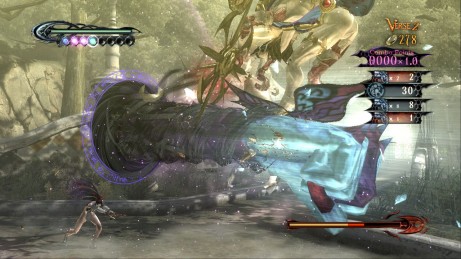 Hoo boy, this game is fantastic. The combat is easy to use if you're unfamiliar with it, and can be mastered by learning different combo patterns and buying new moves in the shop. When I first started playing, I had never played a game like Bayonetta before, but I got the hang of the combat right away.
Hoo boy, this game is fantastic. The combat is easy to use if you're unfamiliar with it, and can be mastered by learning different combo patterns and buying new moves in the shop. When I first started playing, I had never played a game like Bayonetta before, but I got the hang of the combat right away.
The combat revolves around two buttons, one that controls the weapons on in your hands, and one that controls the weapons on your feet. That's one thing that sets Bayonetta apart from other games in its genre, the ability to use two different weapon types at once and combo between them. And the weapons in this game are cartoonishly ridiculous and creative. including Bayonetta's signature revolvers, a hammer twice her size, a bow and arrow that shoots insects, a giant mechanical scythe, and two chain saws that can be attached to the feet to be used as roller blades. And because of the combo system, Bayonetta can whack enemies with her guns and then squash them with her hammer in one fell swoop.
The main feature of Bayonetta's combat is the mechanic known as Witch Time. By dodging an enemy attack at the last moment, time slows down and Bayonetta can get a lot of damage in before the enemies speed up again and resume attacking. In game, this is very satisfying to pull off, and I think it's an amazingly fresh gameplay concept.
Music
The soundtrack of Bayonetta includes 3 major kinds of tracks: ambient background music, jazzy J-pop vocal songs, and grandiose church choir music. The ambient music is not much to write home about, though it sounds nice, because it's usually subtle piano music. But here are the other two kinds of music, equally amazing, are really special.
Also, I want to note that because a lot of music in Bayonetta 2 was also in the original game, I'll also talk about when the songs played in the first game. I think it's important to know what the song was originally written for.
"Churchy" Music
When I say this type of music sounds like it was recorded by a full-on Catholic choir, I mean it. Most of these songs are a contrast between the grandiose choir and an intense piano part. These songs usually play during the main boss fights of the game, so when they do, you know the game means business. A great example of this is "Sapientia [In The Choice Between Good and Evil]":
I also want to note that all of the major bosses in the first game are named after the Cardinal Virtues (Fortitudo, Temperantia, Iusticia, and Sapientia), and I'll get back to that when I talk about the various cultures Bayonetta draws from, including heavily borrowing from Christian lore. b b
The choir music is also accompanied by a symphony orchestra background, which helps make the sound feel so huge. I would kick myself if I didn't also show "One of a Kind", which plays during the game's opening and climax, and is probably the most iconic choir/orchestral music piece in the game
"Jazzy J-Pop" Music
As you might expect, the music I put in this category sounds like Japanese pop music with a jazzy twist. There are usually vocals, sometimes with lyrics and sometimes with just a melody. The most iconic songs from both Bayonetta are probably that main themes of both games, which are upbeat, energetic renditions of 'moon' songs, These songs, which are "Fly Me To the Moon" and "Moon River", were initially slow songs, but they both were made to fit the fast-paced style of Bayonetta, and they did it well. Take a listen, if you want:
Whereas the "church choir" music was created to be in line with the game's grand Christian imagery, music like these pieces were made to fit the character of Bayonetta, and her sassy and confident personality (wait 'till I talk about her character). Easily my favorite song of this time is the end credits theme of the first game, "Let's Dance, Boys!". This song has no lyrics, but it's a fast-paced jazzy song that really ends the game on a high note:
Art/Visuals
The locations in Bayonetta 2 are truly spectacular. The team that worked on the game took trips to Europe to use the architecture there as an example, and the fictional city of Noatun is an excellent example of how well they pulled it off:
There's not a lot more to say about the environments other than how beautiful they are, so for more examples I would recommend checking out the Cathedral of Cascades, Inferno, and Mt. Fimbulventr.
The "color theme" of Bayonetta 2 is blue, as opposed to the red of the first game. By the "color theme", I mean the color of the trails behind Bayonetta's attacks, which make her moves pop and make the action look cooler and more exciting. The first game's color was red, which I felt was a little harsh on the eyes at times.
Story/Characters
Both Bayonetta games get a pretty bad rap when it comes to story, but if you really understand it, it's quite a good one. To the first-time player, the story is admittedly confusing. It's because the story of the two games are intertwined due to time travel, and a knowledge of the lore of the Bayonetta universe is pretty necessary. The characters, however, are generally well recieved.
.full.641838.jpg) |
| In the first game, Cereza sees Bayonetta as a role model, and this responsibility gradually fleshes out Bayonetta's character |
First of all, there's the main character, Bayonetta, whose childhood name was Cereza before she lost her memories. In the first game, she is introduced as being a powerful, sassy woman who is always in control of the situation she is in, while sometimes being subject to overconfidence. Throughout the first game, her character is developed after she meets a young girl named Cereza, who thinks Bayonetta is her mother. Greatly annoyed at first, Bayonetta soon takes on a motherly role for the child and becomes fiercely protective of her. She teaches her how to survive on her own, and near the end of the game it is revealed that Cereza is actually Bayonetta as a child. This dynamic both develops Bayonetta's softer side and depicts her as she was before going through the tragedy of her past.
In the second game, Bayonetta's quest is to save her best friend Jeanne's soul from Hell, after she 'died' protecting Bayonetta. While the relationship with Cereza forced Bayonetta into a maternal role, Bayonetta's friendship with Jeanne is emphasized in the second game to show her strong loyalty to and respect for her friends
Other Characters
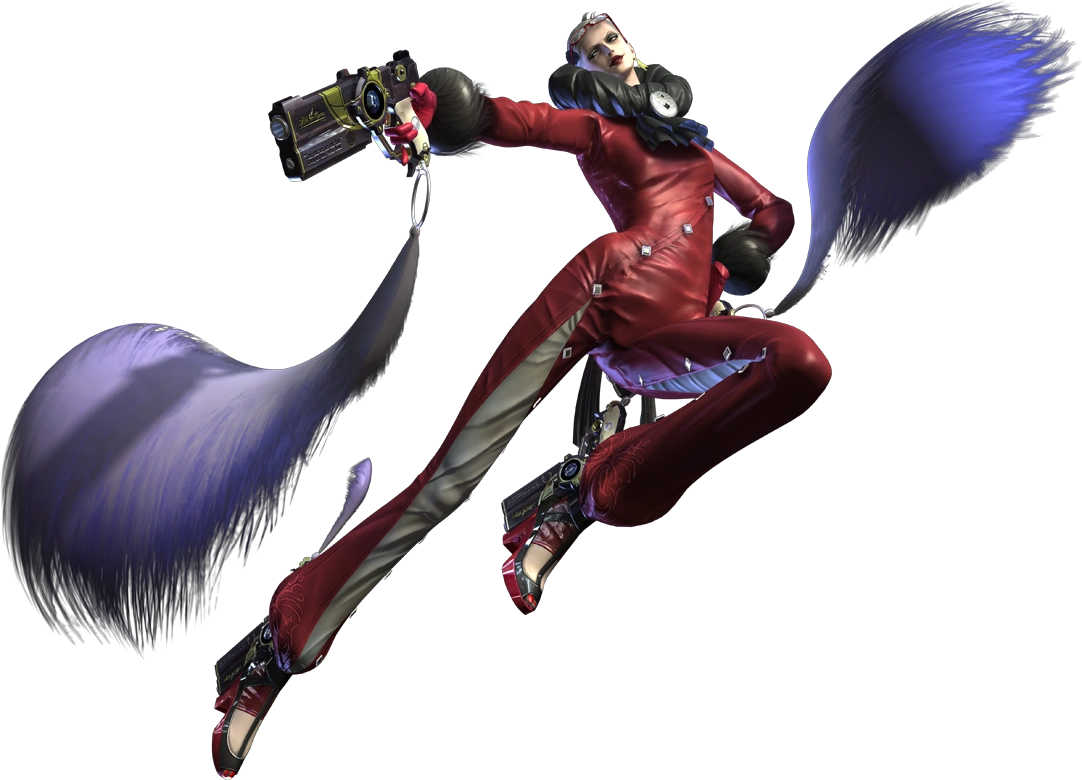 Jeanne is Bayonetta's best friend and friendly rival. Contrasted with Bayonetta's relaxed attitude in
Jeanne is Bayonetta's best friend and friendly rival. Contrasted with Bayonetta's relaxed attitude inthe face of danger, Jeanne is more uptight and impatient. She is more of a risk taker as well, which is why she jumped in the path of a demon to save Bayonetta in the second game. Through the events of both games, Jeanne is initially portrayed as self-serving and spoiled (she grew up wealthy and Bayonetta grew up poor), but her numerous sacrifices for her friends make her a very likeable and cool character. The plot of the second game follows Bayonetta saving her soul from Inferno (Hell).
Rodin is the bartender and Bayonetta's arms supplier. He is hinted at being the Bayonetta universe equivalent of Satan, but he's a really cool dude. He is very good friends with Bayonetta, and while their banter frequently tries to reinforce that they only work for themselves, it is always in a joking manner and their relationship seems to be a personal, not professional one. Even though he's "Satan", Rodin has been shown to have a moral compass, as he does the best he can in the second game to help Bayonetta save Jeanne.
Balder is the villain of the first game and an ally in the second, and is very interesting as a character.
He is Bayonetta's father, and a member of the Lumen Sages, the counterpart of Bayonetta's clan, the Umbra Witches. In the first game, Father Balder is an aging, flamboyant man who is the CEO of a company which is the front for a religious cult. He tries to manipulate his daughter into helping him destroy the world, which she eventually stops by killing him (and the equivalent of God).
He is Bayonetta's father, and a member of the Lumen Sages, the counterpart of Bayonetta's clan, the Umbra Witches. In the first game, Father Balder is an aging, flamboyant man who is the CEO of a company which is the front for a religious cult. He tries to manipulate his daughter into helping him destroy the world, which she eventually stops by killing him (and the equivalent of God).
Culture
Bayonetta pulls from a great many cultures to create the game's mythology and lore, primarily from European cultures, especially Christianity. The game's monsters, the Angels, have marble baby faces and are crusted with gold, making them resemble Renaissance-era sculpture. The character Rodin is named after the French sculptor, and his bar is called "The Gates of Hell", which was a Rodin sculpture based on Dante's Divine Comedy. The three realms, being Paradiso, Purgatorio, and Inferno, are pulled directly from Dante's Divine Comedy, and the Angels have a hierarchy directly pulled from the same book. As I talked about in the music section, the first game has church-choir-styled music that plays during the major boss fights. The Angels and Demons have names that reference the Bible and other Christian literature as well, such as the demon Gomorrah and the Cherubim angels.
There are also aspects of the game that parallel Christianity, without being directly pulled from it. For example, during a fight with Balder in the second game, he starts flying with 12 ribbon-like wings, much like how Lucifer is said to have 12 wings. Rodin has many parallels to Satan/Lucifer, esecially Dante's version, such as how he is encased in ice after falling in battle. He refers to himself as a fallen angel.
Besides Christianity, there are a whole bunch of other cultural references. Balder is named after the Norse god, and Mt. Fimbulventr is named after Fimbulvetr, the apocalypse precursor in Norse Mythology. Bayonetta's weapons Durga and Rakshasa are based on Hindu figures. Her bow, known as Kafka, is named after the writer Franz Kafka. Jeanne's bow is named Samsa, the protagonist of a Kafka novel, which confirms this.
There are countless other examples, but figuring out each reference was really fun for me (and it helps me remember who Kafka is for scholastic bowl).
"The Sexy Part"
Ok, so this has been the elephant in the room (not really), but there is a huge stigma around Bayonetta and its portrayal of sexuality. Let me start out by saying that 1), Bayonetta is objectively a pretty tame game, and 2), I acknowledge that I have very little authority on women's portrayal in video games, which is why I'll be referring to women who have played the game and who have not played the game to see their thoughts.
There is a dichotomy about Bayonetta's sexuality, with some saying that the game objectifies her, and others saying her sexuality empowers her. And the reason it's such a topic is that unlike games like Lollipop Chainsaw and others that blatantly objectify women, Bayonetta is portrayed as a human person whose sexuality is simply an aspect of her personality, and is never for the enjoyment of the male characters.
Please check out this survey of female gamers' opinions on the Bayonetta series.
If you've read the opinions above, you can see that there is a split among female gamers, and even among all gamers, about how the game's sexuality is portrayed. What I noticed is that the people who were disgusted with the sexuality had not played the game, while those who thought it wasn't degrading had actually played the game. I chalk this up to the game's marketing and how the game presents itself in advertisements. Because the marketing focuses so much on that aspect of the game, people are driven away without getting to see how well Bayonetta's personality fits with her sexuality.
I was inspired to get the game after I saw someone playing it, but the less-than-tasteful advertising almost drove me away. All in all, because this is such a heated debate, I didn't want to mention it until the end so I could evaluate the game's merits, but it is definitely a worthy topic of discussion. I personally think that Bayonetta is a complex character whose sexuality fits right in, but people like feminist game critic Anita Sarkeesian have strong opinions otherwise (although, once again, she has not played the games).
Notes
I REALLY apologize for how long this one took. I promise the next one, Majora's Mask, will not take as long. There was so much I wanted to say about all the categories in this game, and the next game will be much simpler. I also talked about the first Bayonetta a whole bunch, so that may have been part of the reason.
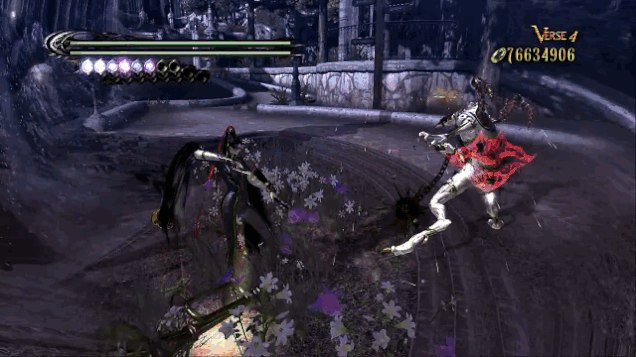

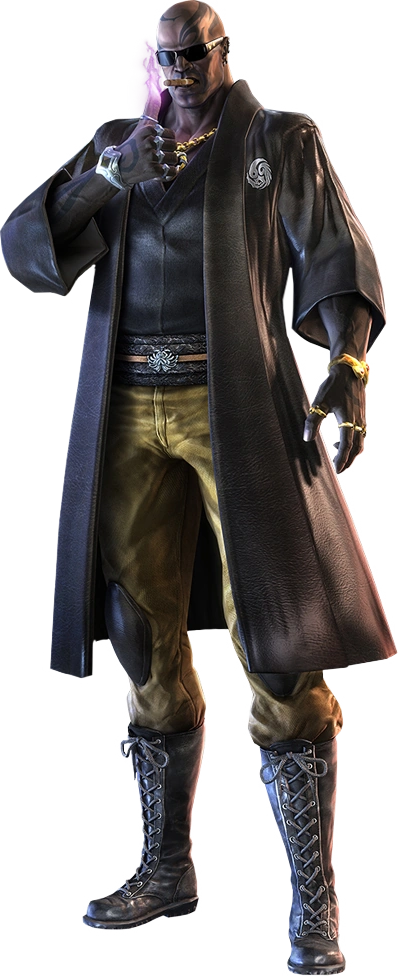
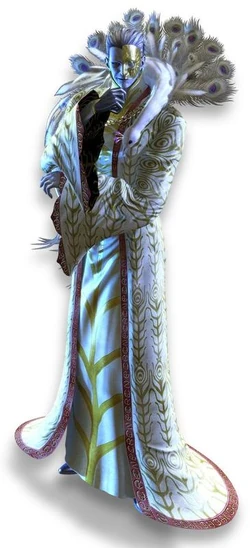
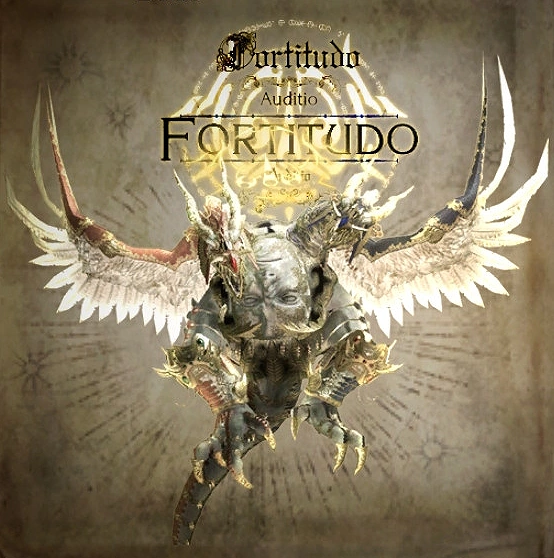
No comments:
Post a Comment